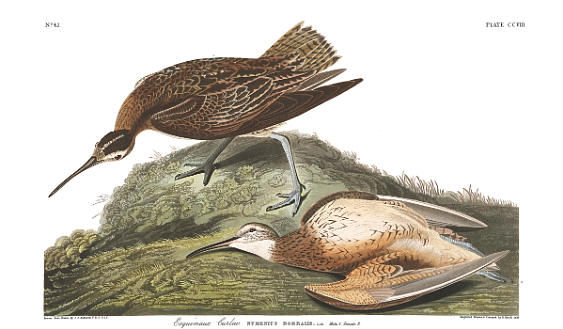The Eskimo curlew (Numenius borealis) was a grassland species of shore bird in the sandpiper family.
This curlew had warm brown or cinnamon colored feathers with white speckles. Its primary wing feathers were solid colored. It had a long, slender bill that curved markedly downward.
Long legs facilitated wading in shallow water to feed. The legs could be various colors, ranging from dark green to gray to dark blue-gray.
Curlews once made long fall migratory flights from the central Canadian tundra within the Arctic Circle to southern Argentina via Labrador and the Atlantic Ocean. Their return trip was over the landmass of South, Central and North America.
If the bird were still in existence, it might well have been present in Arkansas in early spring and following its ancestral flyway. So, the timing of this April "fowl" joke was not far-fetched.
The Eskimo curlew was first driven toward extinction by the over-hunting of fowlers, because its flesh was considered a delicacy during the late 1800s.
Other factors that put the kibosh on curlews were hard-blowing Dust Bowl sand storms during the 1930s; the pesticide DDT, which in the early 1950s was used to poison grasshoppers, its primary food; and overzealous collectors, who harvested the bird's skins for museum specimens when it was seen to be scarce. Venerable institutions, including The Harvard Museum of Comparative Anatomy and the Smithsonian Institution, were caught up in such collecting.
The bird was declared endangered in 1967, far too late, because the last one known to have been killed in the wild was in 1963. The bird is classed as critically endangered and possibly extinct today.
John James Audubon painted the bird he labeled an "Esquimaux Curlew" in the early 1800s. His painting depicts two curlews, one a female that is mortally wounded on the ground and its mate, which has flown nearby. This behavior, of mates returning to be near an injured partner, allowed hunters to slaughter nesting pairs together.
